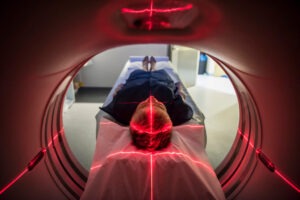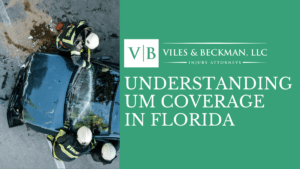
Rear End Car Crashes are Common, which come with some Common Rear End Accident Injuries
For most Americans who do not live in a large metropolis, having a car is a necessity. But there are certain safety risks that come along with driving a motor vehicle.
While you do everything you can to be safe on the road and drive defensively, being involved in a car accident is not that rare. And rear-end collisions are one of the most common types of motor vehicle accidents. As with most car accidents, they happen when you least expect it—and the injuries that result are out of your control.
While hopefully you’ll never have to experience a rear-end collision, here are the three most common injuries that occur during these types of accidents: whiplash, spinal cord injuries, and broke ribs. If you’ve been injured due to another driver’s negligence, a Fort Myers spinal cord injury lawyer can help you pursue damages.
1. Whiplash
Whiplash is defined as when your head is quickly jerked forward and back by a powerful force. That’s the kind of motion you may experience when you have to brake suddenly.
With rear-end collisions, the force is significantly more powerful, and the movements take place even faster. Symptoms of whiplash can include neck pain, headaches, and even dizziness.
If it’s a particularly bad case of whiplash, eyesight and memory may be affected. While the effects of whiplash could dissipate after a few weeks, they could also linger and in the most serious cases, have a long-term impact.
Diagnosing and Treating Whiplash
During an examination to diagnose whiplash, your doctor will move around your head, neck, and arms, checking the range of motion in your neck and shoulders, how that motion causes you pain, how much tenderness you feel in those areas, and check your reflexes, strength, and sensation in your limbs.
Your doctor will also likely before an imaging tests, even those most cases of whiplash cannot be seen in imaging tests, to rule out other conditions that could be causing your neck and back pain. This includes x-rays, CT scans, and MRIs.
Once your whiplash is better understood by your doctor, treatment will begin to relieve the pain you are experiencing and to help the affected areas heal. Some whiplash patients may need: over-the-counter medications, prescription medications, physical therapy, and chiropractic care.
2. Spinal Cord Injury
Spinal cord injuries can occur as a result of a traumatic blow to the spine itself, or to the ligaments and disks in the spine, during a rear-end collision. The blow doesn’t necessarily have to crush or fracture any parts of the spine. Any dislocation in the spine of the back or neck can cause incredible amounts of pain and discomfort.
Aside from the pain and discomfort, a spinal cord injury can also adversely affect your movement and in some of the most severe cases, can cause an individual to lose control over certain bodily functions. Because of the pressure put on your spine during a rear-end collision, spinal cord injuries are often a result of these type of collisions.
Expect More, Receive More: Legal Support That Feels Like Family
Diagnosing and Treating Spinal Cord Injuries
After a rear end collision, you should seek immediate medical attention so that a professional can examine you for any injury to your spinal cord. Some signs that you may have damaged your spinal cord, include: extreme pain or pressure in your neck, head, or back, tingling or loss of sensation in your limbs and digits, some loss of control over a limb(s), trouble breathing or trouble using the bathroom.
Once you are in the care of a medical professional after a rear-end collision, they will likely begin treating you for a spinal cord injury if they determine that there may be some injury to this area.

Then, your doctor will assess your neurologic function, by testing your strength and sensations in your arms and legs. This will be followed by radiological diagnosis (x-rays, MRI, Ct scan) to identify bone fractures, abnormalities in the spinal cord itself, blood clots, herniated discs, or other masses that may be compressing the spinal cord.
Once the doctors are clear on the type of spinal cord injury you received during the rear-end collision, non-surgical and surgical options will be considered.
For many CSI patients, traction is used to bring the spine back into proper alignment and to help restore blood flow to the injured area. If a patient has a serious herniated disc, blood clot, or some other serious injury to the spine that needs immediate intervention, surgery may be required.
3. Broken Ribs
Car accidents are one of the leading causes of broken ribs, since steering wheels, seatbelts, and airbags are all aimed right at the abdomen, which just so happens to be protected by the ribs.
The difficulty with broken ribs is that they can be difficult to diagnose and to treat. The pain that is caused by a fractured rib is often only felt if you put your body in certain positions, or when performing certain activities like laughing or coughing.
Diagnosing and Treating Broken Ribs
When diagnosing broken ribs, your doctor will touch your abdomen area, listen to your lungs, and watch your rib cage as you move. This will likely be followed by imaging tests, like x-rays, MRIs, and CT scans.
Like we mentioned, treating broken ribs is difficult, because unlike other bones, ribs cannot be braced or casted. Instead, ribs often have to be left to heal on their own. This usually takes a few months. Restricting movement and using hot and cold therapy can help relieve pain and encourage healing.
Your doctor will also likely prescribe some pain medications to help receive the pain from broken ribs.
In the past, compression wraps were used around the chest to treat broken ribs, but this is no longer used since it can keep you from breathing properly, increasing the risk of pneumonia.
Hiring a Florida Read-end Accident Attorney
Any injuries that you suffer from a rear-end collision should not be taken lightly. If you’ve been involved in a rear-end collision, you may be entitled to receive compensation for your injuries.
Whether you’ve sustained whiplash, a spinal cord injury, broken ribs, or any other injury, contact Viles & Beckman, LLC today by calling (239) 334-3933 or by using our online form to learn about your options and rights.
About the Author of this Page: The above information was written or reviewed by one of the attorneys at Viles & Beckman LLC who have a combined experience of nearly 60 years: Marcus Viles, Michael Beckman. The information provided in this article comes from years of experience trying legal cases outside and inside courtrooms throughout Florida along with extensive research.






